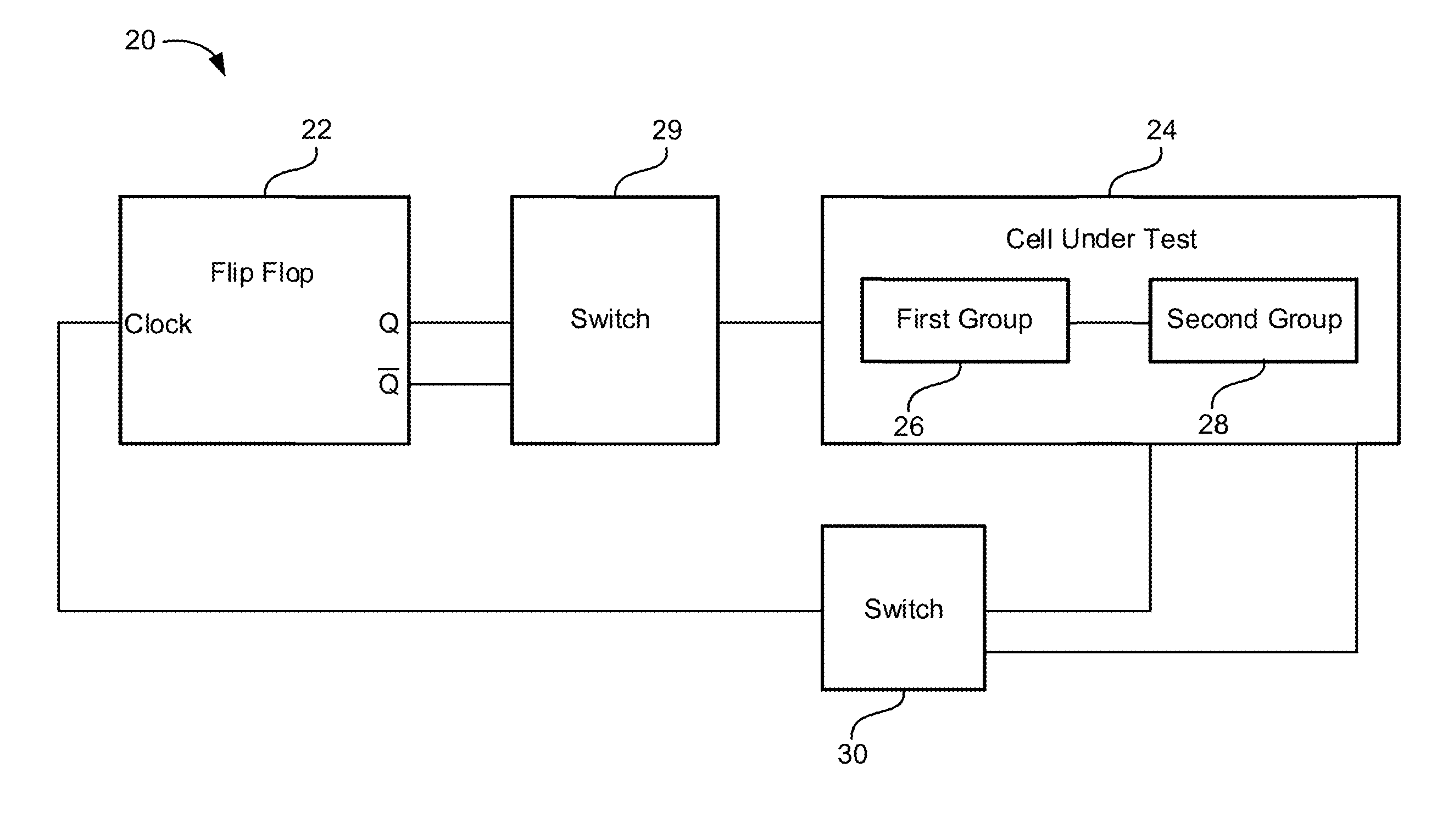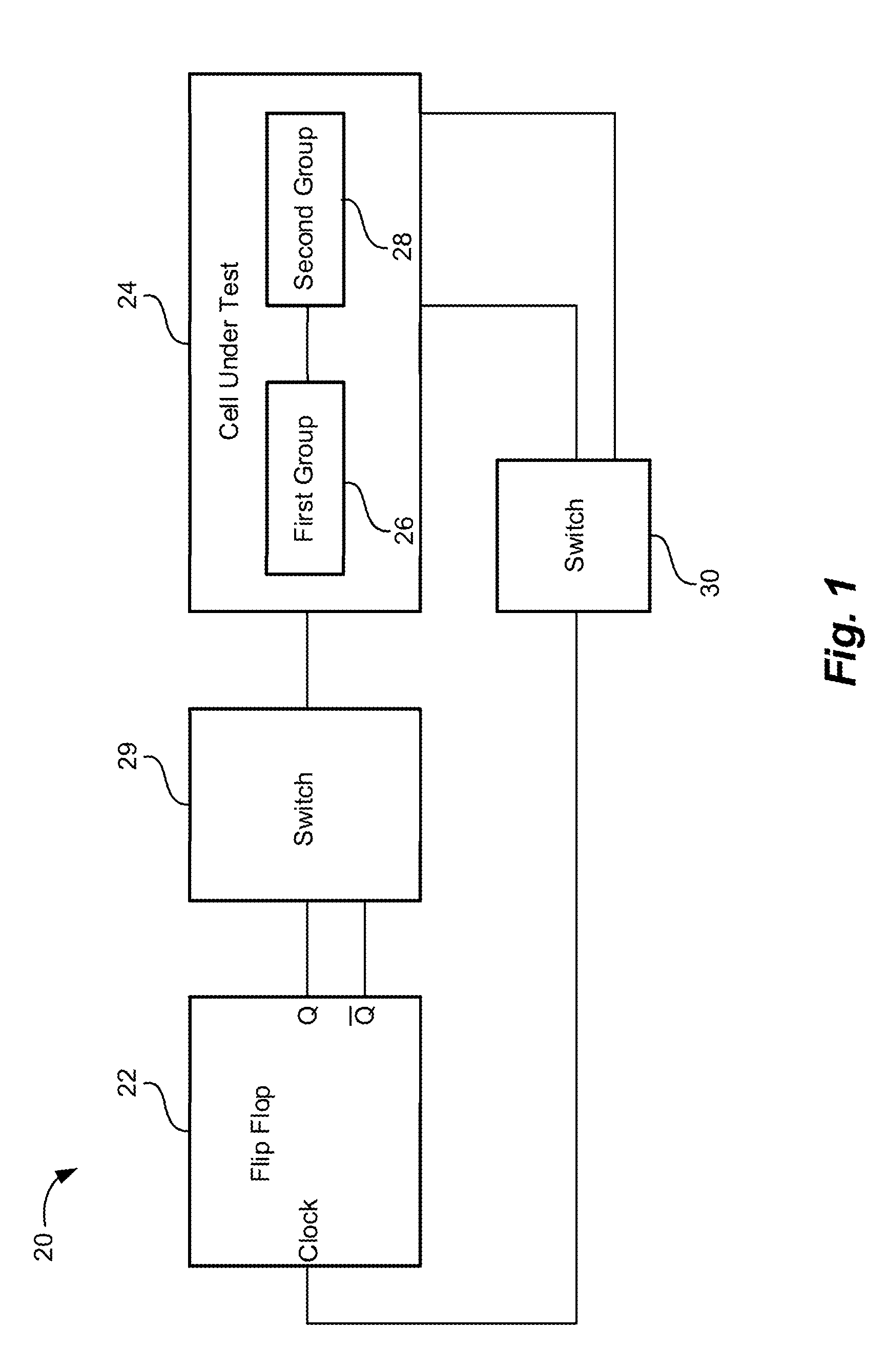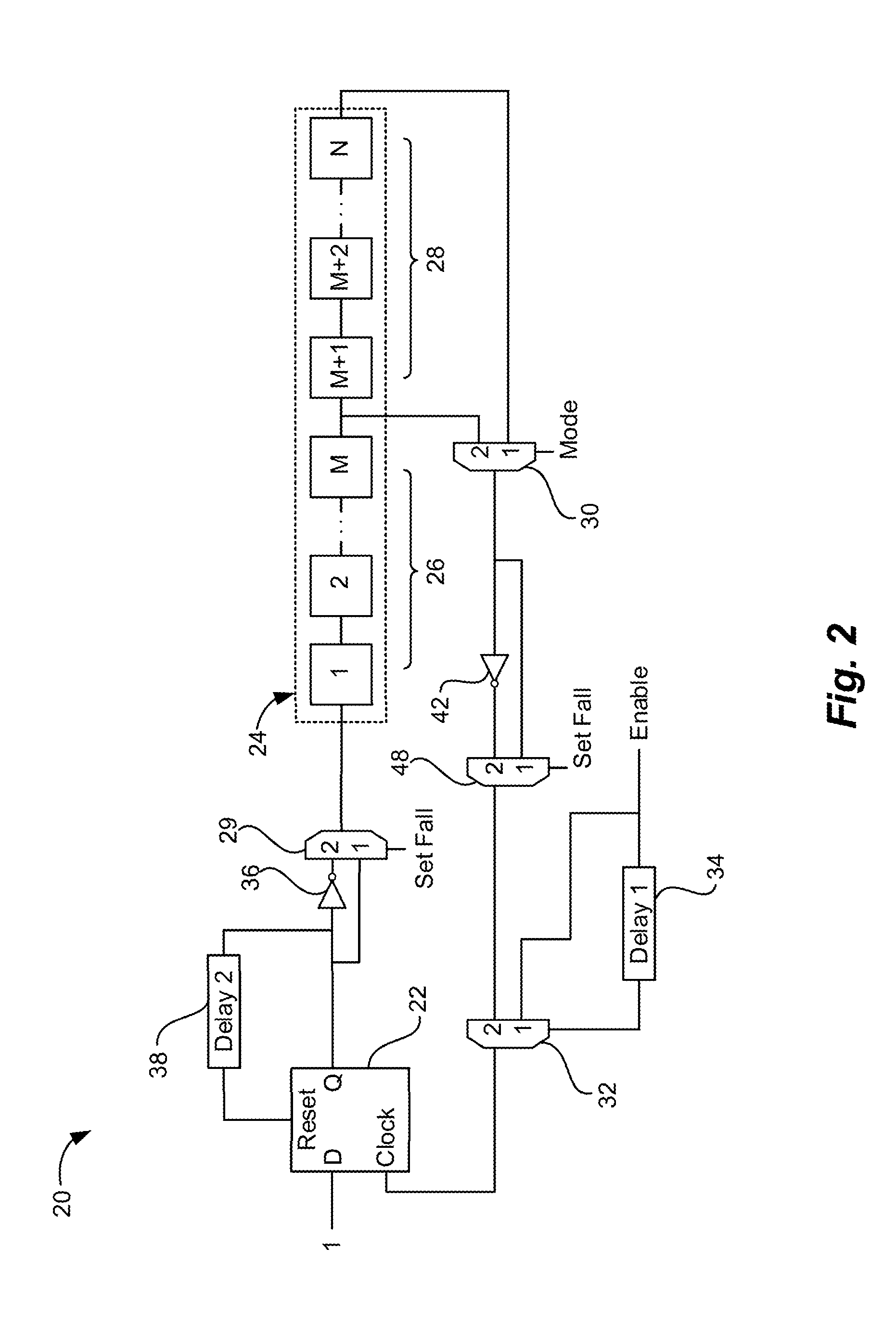Scheme to measure individually rise and fall delays of non-inverting logic cells
- Summary
- Abstract
- Description
- Claims
- Application Information
AI Technical Summary
Benefits of technology
Problems solved by technology
Method used
Image
Examples
Embodiment Construction
[0023]FIG. 1 is a block diagram of a logic cell delay test and characterization circuit according to one embodiment. The logic cell delay test and characterization circuit 20 includes a flip-flop 22, a chain of logic cells 24 including a first group 26 of logic cells and a second group 28 of logic cells coupled to the flip-flop 22 in a ring oscillator configuration. A first switch 29 is coupled between the output of the flip-flop 22 and the input of the cells under test 24. A second switch 30 is coupled between the output of the cells under test 24 and the input of the flip-flop 22.
[0024]The test and characterization circuit 20 of FIG. 1 makes advantageous use of a property of flip-flop type ring oscillators in which the frequency of flip-flop ring oscillators depends only on one type of signal transition, either the rising edge signal transition or the falling edge signal transition. The test and characterization circuit 20 uses the chain of logic cells under test 24 as a delay ele...
PUM
 Login to View More
Login to View More Abstract
Description
Claims
Application Information
 Login to View More
Login to View More - R&D
- Intellectual Property
- Life Sciences
- Materials
- Tech Scout
- Unparalleled Data Quality
- Higher Quality Content
- 60% Fewer Hallucinations
Browse by: Latest US Patents, China's latest patents, Technical Efficacy Thesaurus, Application Domain, Technology Topic, Popular Technical Reports.
© 2025 PatSnap. All rights reserved.Legal|Privacy policy|Modern Slavery Act Transparency Statement|Sitemap|About US| Contact US: help@patsnap.com



